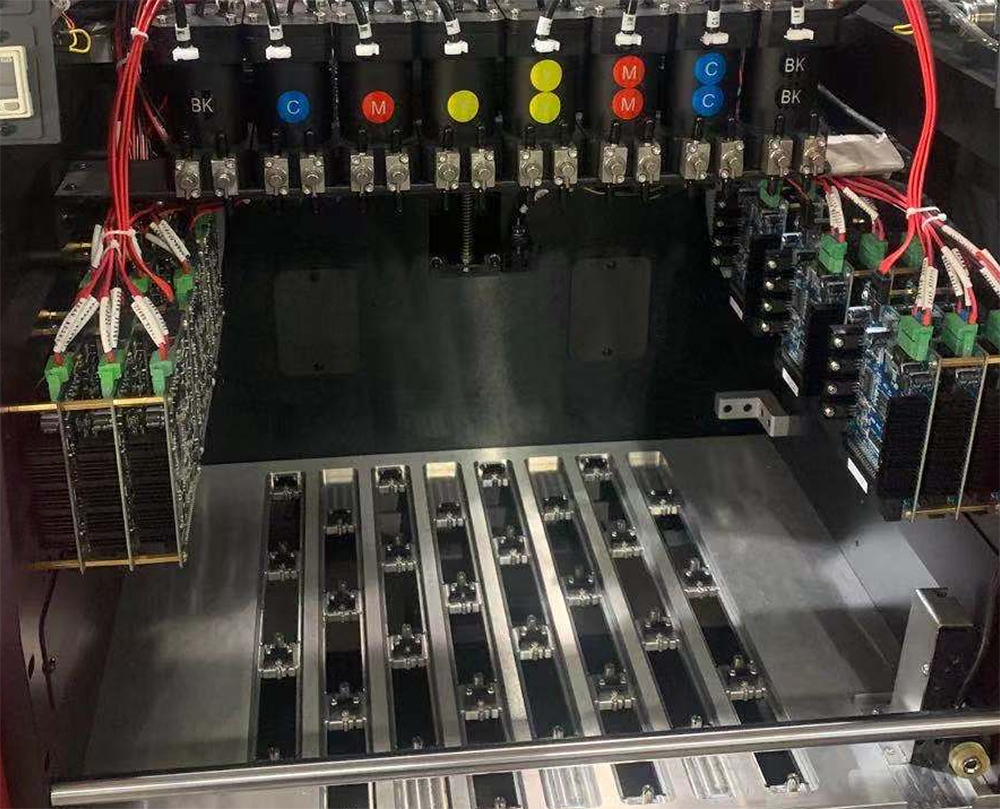UV Flatbed Printer: Understanding the Role of Printheads
UV Flatbed Printer: Understanding the Role of Printheads
In the realm of digital printing, UV flatbed printers have emerged as a game-changer, revolutionizing the way images and designs are transferred onto various substrates. These printers, equipped with advanced technologies, offer unparalleled precision, versatility, and efficiency, making them a preferred choice for a wide array of applications, from signage and advertising to industrial manufacturing and decorative arts. At the heart of this technological marvel lies the printhead, a crucial component that plays a pivotal role in determining the quality, speed, and overall performance of the printer. This article delves into the intricacies of UV flatbed printers, with a particular focus on the role and significance of printheads.

The Basics of UV Flatbed Printers
UV flatbed printers are designed to print directly onto flat or slightly curved surfaces,区别于传统的滚筒式打印机。They utilize UV-curable inks that are instantly dried by UV light after being deposited onto the material. This process ensures vibrant colors, high durability, and resistance to fading, making UV prints ideal for outdoor applications where exposure to environmental elements is a concern.
The printer’s flatbed design allows for easy loading and unloading of materials, accommodating a broad range of sizes and thicknesses. From rigid substrates like glass, metal, and acrylic to flexible materials such as PVC and certain textiles, UV flatbed printers offer unparalleled versatility in media handling.
The Role of Printheads in UV Flatbed Printers
Printheads are the nozzles that dispense ink onto the substrate during the printing process. They are the endpoint of the printer’s ink delivery system, responsible for translating digital information into a tangible, high-resolution image. In UV flatbed printers, printheads are often piezoelectric or thermal in nature, each employing different mechanisms to eject ink droplets.
Piezoelectric Printheads: These printheads use piezoelectric crystals that deform under an applied voltage, creating pressure within the ink chamber and forcing a droplet out through the nozzle. Piezoelectric technology offers precise control over droplet size and ejection, resulting in sharper images and finer details.
Thermal Printheads: In thermal printheads, a small resistor heats up rapidly, creating a bubble in the ink that forces a droplet out. While this technology may not provide the same level of precision as piezoelectric printheads, it is generally more cost-effective and suitable for applications where extreme detail is not the primary concern.
Key Factors Influencing Printhead Performance
Several factors contribute to the effectiveness and longevity of printheads in UV flatbed printers:
Resolution: The resolution of a printhead, typically expressed in dots per inch (DPI), directly impacts the print quality. Higher DPI values result in sharper images and smoother gradients.
Ink Compatibility: Printheads must be compatible with the specific type of UV-curable ink used in the printer. Incompatibility can lead to clogged nozzles, reduced print quality, and premature printhead failure.
Durability and Maintenance: Printheads are subject to wear and tear due to continuous use and exposure to ink and UV light. Regular cleaning and maintenance routines are essential to prevent clogged nozzles and ensure consistent print quality.
Speed and Efficiency: The ability of a printhead to eject ink droplets quickly and accurately determines the overall printing speed and productivity of the UV flatbed printer.
Advancements in Printhead Technology
As UV flatbed printing technology continues to evolve, printhead technology is also undergoing significant advancements:
Increased Nozzle Density: Manufacturers are increasing the number of nozzles per printhead, enabling higher resolutions and faster printing speeds without compromising on quality.
Variable Dot Technology: Some modern printheads can adjust the size of ink droplets during printing, optimizing ink usage and enhancing image quality, particularly in areas with varying color densities.
Self-Cleaning Mechanisms: To reduce maintenance requirements, some printheads now feature integrated self-cleaning systems that help prevent nozzle clogging and extend the printhead’s lifespan.
Durability Enhancements: Manufacturers are developing printheads with enhanced resistance to UV light and ink chemicals, improving their longevity in demanding printing environments.
Conclusion
The printhead is a vital component in UV flatbed printers, directly influencing print quality, speed, and overall performance. Understanding its role and the factors that affect its performance is crucial for anyone involved in UV flatbed printing, from printer operators to business owners considering an investment in this technology. As printhead technology continues to advance, UV flatbed printers will only become more efficient, versatile, and capable of producing exceptional prints that meet the demands of even the most discerning applications. Whether you’re printing high-end signage, custom decorative pieces, or industrial components, the printhead is the unsung hero behind every stunning UV print that leaves a lasting impression.
